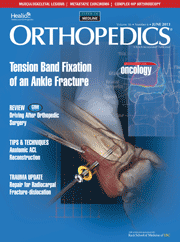
TRAUMA
Intramedullary nail beneficial vs locking compression plate for humeral shaft fracture
Orthopedics. 2015 Sep 1;38(9):e825-960 patients presenting with humeral shaft fractures were randomized to undergo surgical fixation with either an intramedullary interlocking nail or locking compression plate. The purpose of the study was to compare operational and functional outcomes of these fixation methods over 1 year postoperatively. The results showed that intramedullary nail led to significantly shorter operative times, hospital stay, lower intraoperative blood loss, and earlier fracture union. The groups were comparable in terms of functional outcomes and the incidence of non-union.
Unlock the full ACE Report
You have access to {0} free articles per month.Click below to unlock and view this {1}
Unlock NowCritical appraisals of the latest, high-impact randomized controlled trials and systematic reviews in orthopaedics
Access to OrthoEvidence podcast content, including collaborations with the Journal of Bone and Joint Surgery, interviews with internationally recognized surgeons, and roundtable discussions on orthopaedic news and topics
Subscription to The Pulse, a twice-weekly evidence-based newsletter designed to help you make better clinical decisions
Exclusive access to original content articles, including in-house systematic reviews, and articles on health research methods and hot orthopaedic topics
Or upgrade today and gain access to all OrthoEvidence content for just $1.99 per week.
Already have an account? Log in


Subscribe to "The Pulse"
Evidence-Based Orthopaedics direct to your inbox.
{0} of {1} free articles
Become an OrthoEvidence Premium Member. Expand your perspective with high-quality evidence.
Upgrade Now












































































